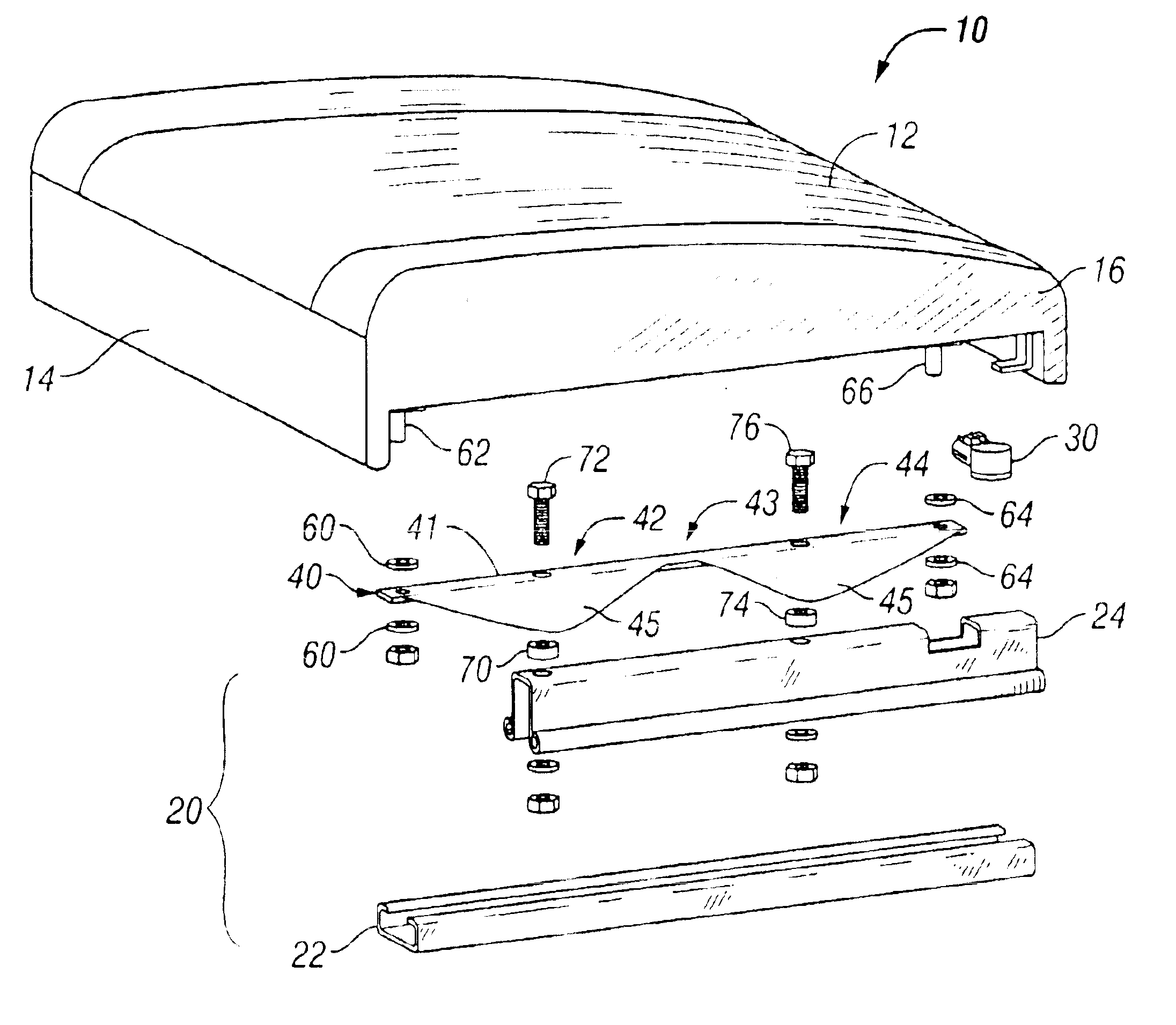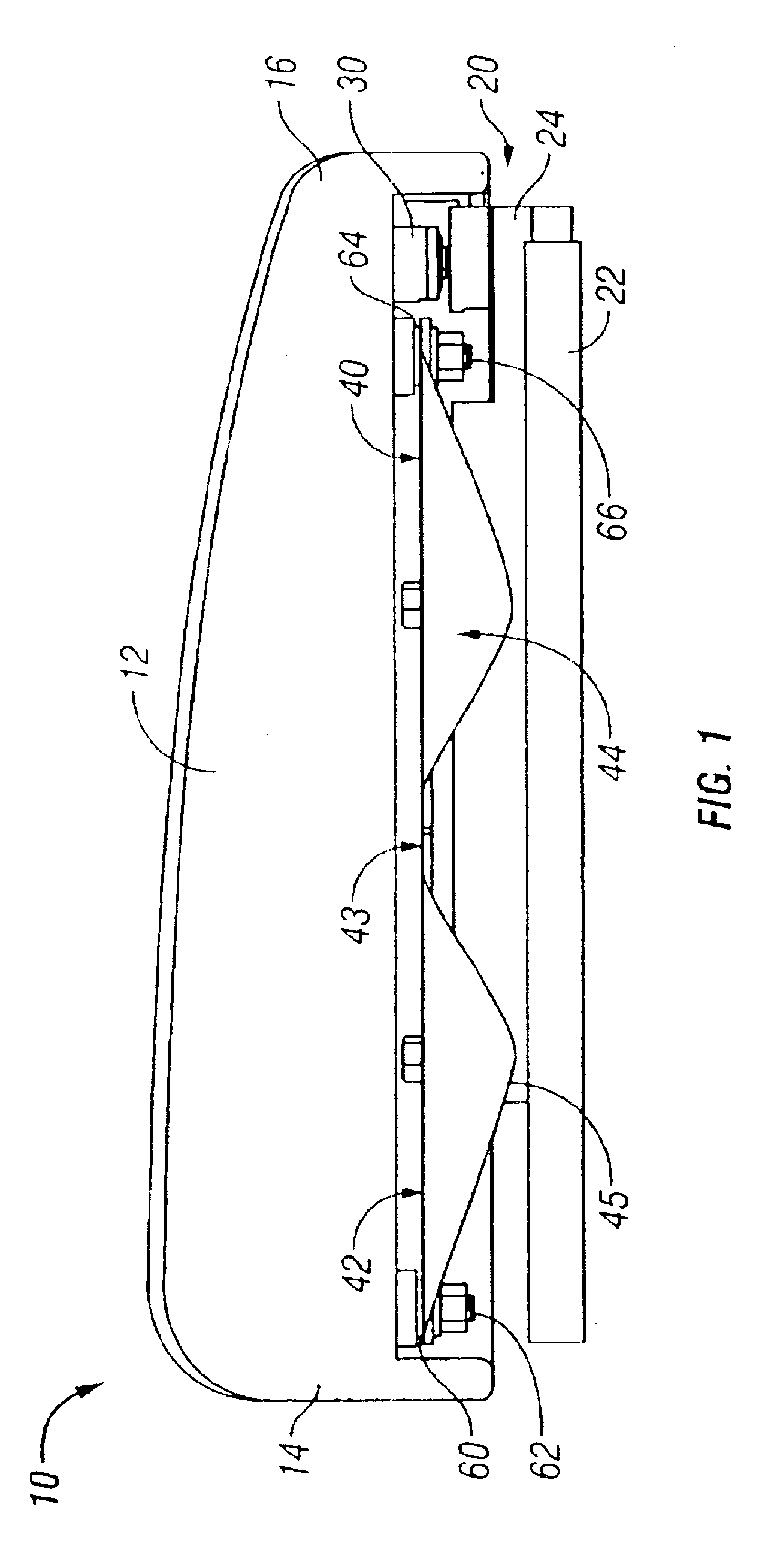Seat weight measurement system
a weight measurement and seat technology, applied in the field of seat weight measurement system, can solve the problems of varying the accuracy of weight measurement, the occupant of the front passenger seat may be injured, and the device could actually injure the occupants,
- Summary
- Abstract
- Description
- Claims
- Application Information
AI Technical Summary
Benefits of technology
Problems solved by technology
Method used
Image
Examples
Embodiment Construction
A weight measurement system is disclosed for measuring the weight of an occupant in a vehicle seat. In a preferred embodiment, a sensor is positioned at the close to the fore-and-aft center of gravity of an occupant of a vehicle seat and a load transfer link is used to transfer the weight from the front portion of the vehicle seat to the sensor to be measured. The transfer link is a selectively compliant beam having a first rigid section and a second rigid section connected to each other via a flexible area. The first and second rigid sections preferably include wing portions for increasing the rigidity of the sections. The flexible area is more compliant than the rigid sections. In one embodiment of the invention, the flexible area has a jog to increase the flex. The load transfer link is configured to transition a load placed on the front portion of the link to the rear portion. In a more preferred embodiment of the invention, the load transfer link is made of a high strength, low...
PUM
 Login to View More
Login to View More Abstract
Description
Claims
Application Information
 Login to View More
Login to View More - R&D
- Intellectual Property
- Life Sciences
- Materials
- Tech Scout
- Unparalleled Data Quality
- Higher Quality Content
- 60% Fewer Hallucinations
Browse by: Latest US Patents, China's latest patents, Technical Efficacy Thesaurus, Application Domain, Technology Topic, Popular Technical Reports.
© 2025 PatSnap. All rights reserved.Legal|Privacy policy|Modern Slavery Act Transparency Statement|Sitemap|About US| Contact US: help@patsnap.com



